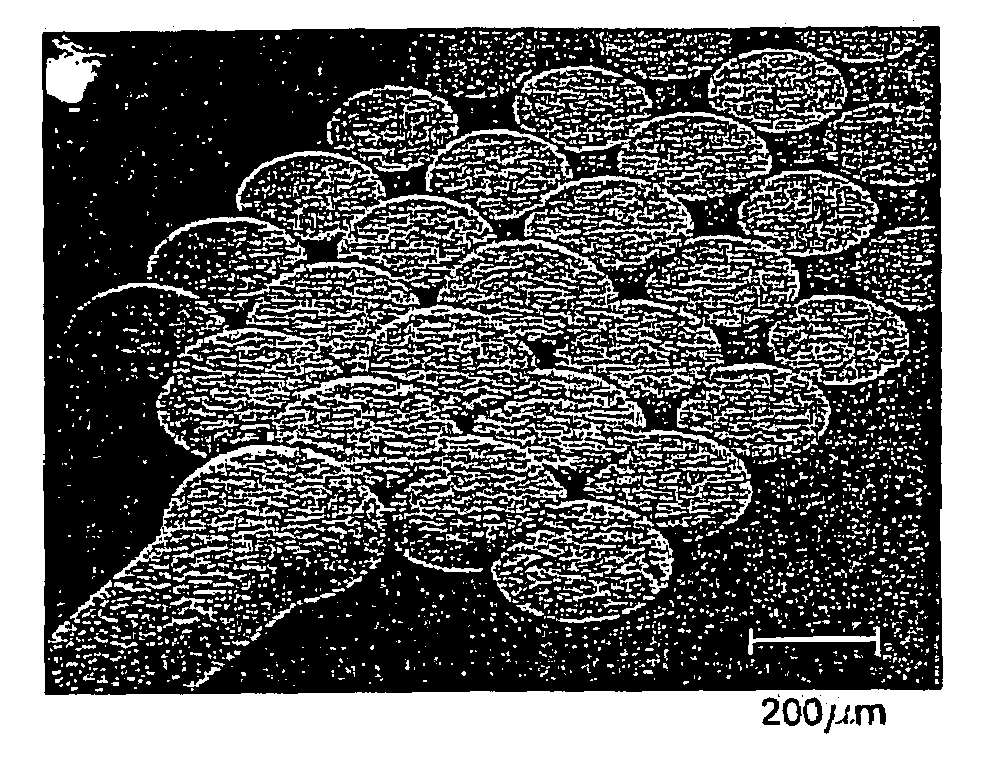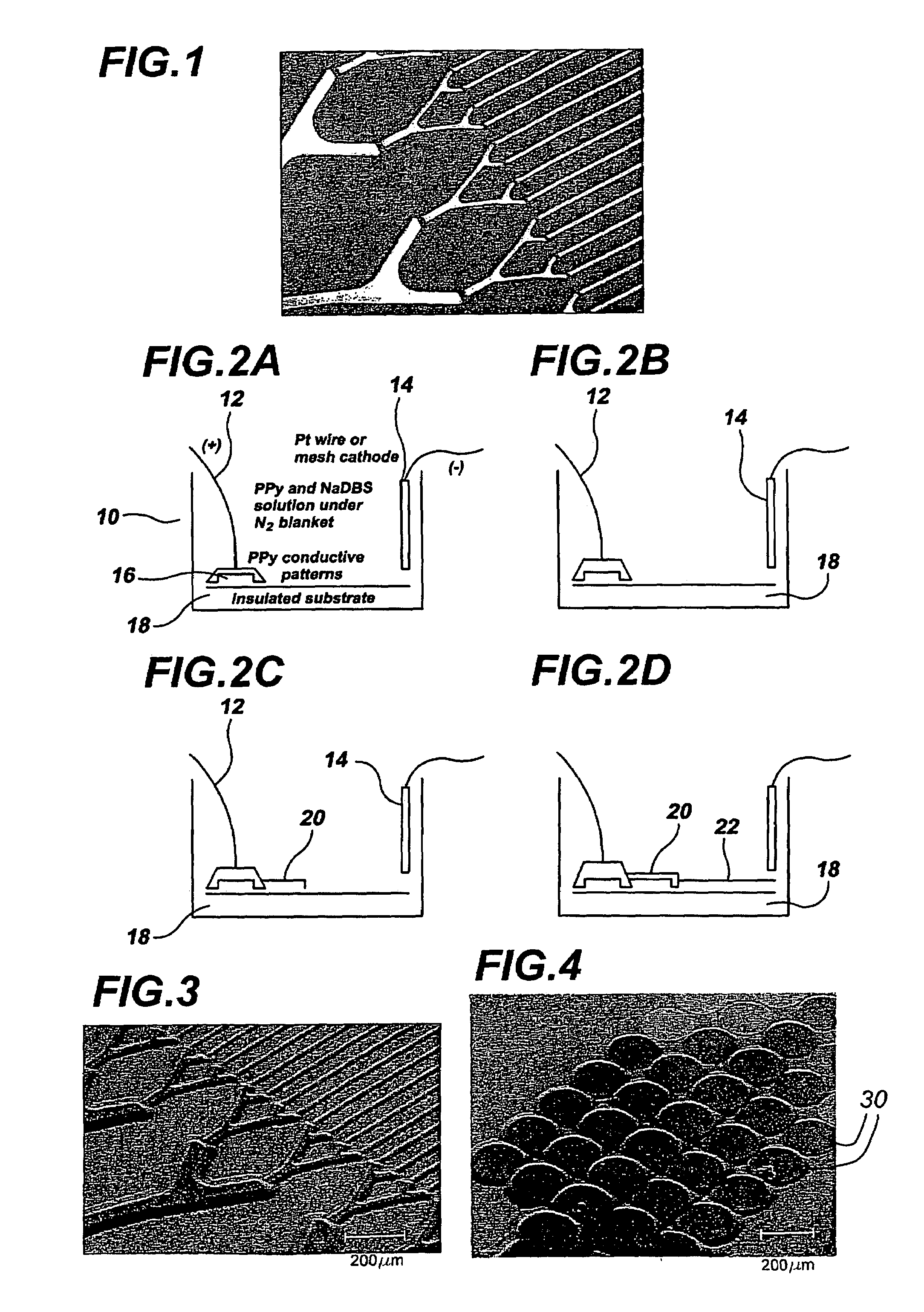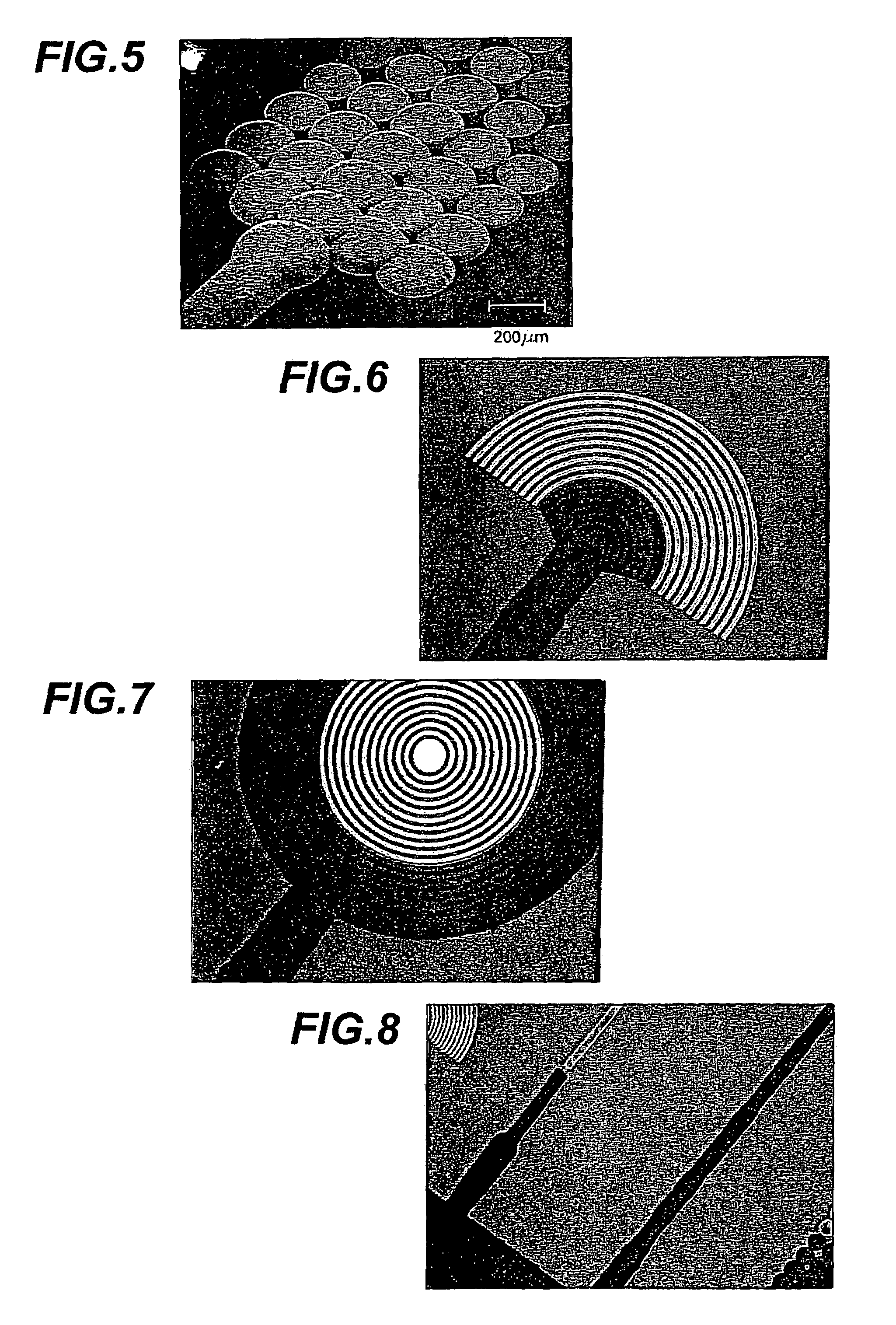Three dimensional microfabrication
- Summary
- Abstract
- Description
- Claims
- Application Information
AI Technical Summary
Benefits of technology
Problems solved by technology
Method used
Image
Examples
Embodiment Construction
[0024]The present invention is a new approach to generate 3D microfabricated structures using very few steps and a single photolithographic mask. The approach relies on a conductive template that can be produced using conventional lift-off microfabrication, or by other means such as self-assembly or printing followed by an electrodeposition step to produce the full structure. The design of the conductive template determines the full 3D structure. Gaps, or non-conductive areas, between conductive regions of the template are intentionally introduced. As material is deposited it expands both vertically and horizontally; the horizontal expansion bridges the spaces between the conductive regions. Once that space is bridged the electrodeposited material forms an electrical connection with the new region and deposition then continues not only on the existing structure but on the newly connected region as well.
[0025]FIGS. 2a, b, c, and d are schematic illustrations of an embodiment of appar...
PUM
| Property | Measurement | Unit |
|---|---|---|
| Length | aaaaa | aaaaa |
| Structure | aaaaa | aaaaa |
| Solubility (mass) | aaaaa | aaaaa |
Abstract
Description
Claims
Application Information
 Login to View More
Login to View More - R&D
- Intellectual Property
- Life Sciences
- Materials
- Tech Scout
- Unparalleled Data Quality
- Higher Quality Content
- 60% Fewer Hallucinations
Browse by: Latest US Patents, China's latest patents, Technical Efficacy Thesaurus, Application Domain, Technology Topic, Popular Technical Reports.
© 2025 PatSnap. All rights reserved.Legal|Privacy policy|Modern Slavery Act Transparency Statement|Sitemap|About US| Contact US: help@patsnap.com



